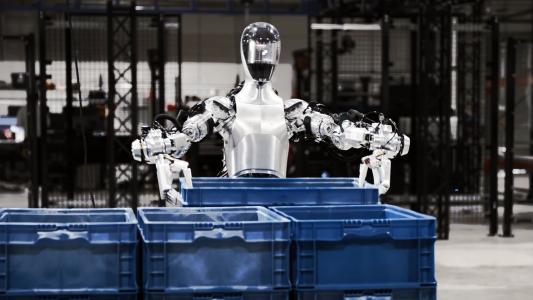Princeton researchers have trained an AI to predict and prevent a common problem arising during nuclear fusion reactions — and they think it might be able to solve other problems, too.
The challenge: If the Spice Girls were physicists, their song “2 Become 1” might have been about nuclear fusion, a reaction that occurs when two atoms merge.
Fusion releases a tremendous amount of energy in the form of heat — it’s what powers the sun and other stars — and if we could harness the reaction here on Earth, we would have a near limitless source of clean energy.
By using magnetic fields to confine plasma in devices called “tokamaks,” we can achieve the super hot, high-pressure conditions needed to trigger fusion, but just like a spicy relationship, it’s easier to start fusion than to maintain it — it only takes a split second for the plasma to become unstable, ending the fusion reaction and potentially damaging the reactor.
“We tell it what the goal is, what to avoid, and the knobs it can turn to achieve those outcomes.”
Azarakhsh Jalalvand
What’s new? Researchers at Princeton University and the DOE’s Princeton Plasma Physics Laboratory (PPPL) have now figured out a way to use AI to prevent “tearing mode instabilities” — breaks in the magnetic field lines within plasma that give it a chance to escape a tokamak’s control.
“Tearing mode instabilities are one of the major causes of plasma disruption, and they will become even more prominent as we try to run fusion reactions at the high powers required to produce enough energy,” said first author Jaemin Seo. “They are an important challenge for us to solve.”
How it works: The Princeton team started by feeding an AI data from past experiments at the DOE’s DIII-D tokamak in San Diego. They then trained it to predict the likelihood of a tearing mode instability based on the current characteristics of a plasma.
That AI was then used to train a reinforcement learning algorithm — a type of AI that learns through trial and error, receiving “rewards” or “punishments” based on the outcomes of its decisions — to control the fields to prevent a predicted tearing mode instability in simulated fusion experiments.
“We don’t teach the reinforcement learning model all of the complex physics of a fusion reaction,” said co-author Azarakhsh Jalalvand. “We tell it what the goal is — to maintain a high-powered reaction — what to avoid — a tearing mode instability — and the knobs it can turn to achieve those outcomes.”
The team tested their algorithm in a real nuclear fusion experiment.
During this training, the researchers could watch along and fine-tune the process — if the change the AI wanted to make was too fast for the tokamak to accommodate, for example, they could slow it down.
Once trained, the team tested their algorithm in a real fusion experiment at the DIII-D tokamak and found that it could predict tearing mode instabilities up to 300 milliseconds in advance — enough time for the system to take action to prevent them.
“By learning from past experiments, rather than incorporating information from physics-based models, the AI could develop a final control policy that supported a stable, high-powered plasma regime in real time, at a real reactor,” said research leader Egemen Kolemen.
What we really, really want: This is an exciting proof of concept that AI could help us achieve stable nuclear fusion, but there is still a lot of work ahead.
First up will be more experiments at DIII-D. After that, the researchers will try to use their AI at other tokamaks. Because tearing mode instabilities are just one of many problems that make fusion reactions hard to sustain, they also want to see if they can expand this AI to predict and prevent other issues stopping us from harnessing the power of fusion on Earth.
“You could imagine one large reward function that turns many different knobs to simultaneously control for several types of instabilities,” said co-author Ricardo Shousha.
We’d love to hear from you! If you have a comment about this article or if you have a tip for a future Freethink story, please email us at [email protected].






